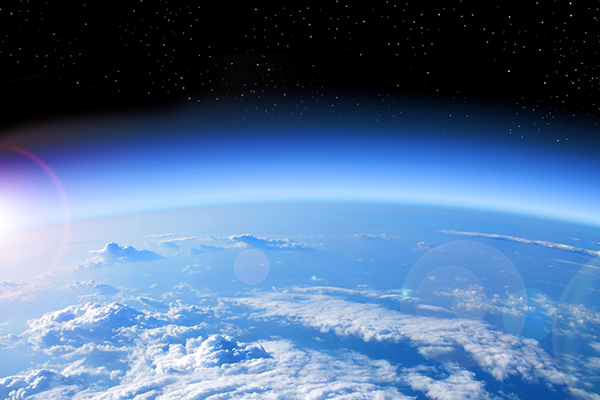Auburn commemorating annual National Space Day with tribute to university’s astronauts
Article body
Humankind has searched the heavens in the spirit of exploration for decades, and Auburn University has had a hand in advancing that mission through the years.
In honor of the designation of May 6 as National Space Day, Auburn has created a special webpage to commemorate the contributions of its six astronauts and other alumni who have contributed to the pursuit of space exploration. Jan Davis ’77, the late Hank Hartsfield ’54, Ken Mattingly ’58, Kathryn Thornton ’74, Jim Voss ’72 and the late Clifton Curtis Williams ’54 are the six Auburn alumni who have earned the coveted title of astronaut.
In that esteemed group of six, each has been awarded the Auburn Alumni Association’s Lifetime Achievement Award and combined to fly more than 20 space missions during their illustrious careers. Davis, Hartsfield, Mattingly, Thornton and Voss combined for more than 7,400 hours in space, with Williams logging more than 2,100 hours of flight time in a jet aircraft before being tragically killed in a 1967 airplane accident.
Four of the six astronauts—Davis (mechanical engineering), Mattingly (aeronautical engineering), Voss (aerospace engineering) and Williams (mechanical engineering)—earned degrees from the Samuel Ginn College of Engineering, the most of any of Auburn’s colleges.
“Auburn’s history with NASA, the space program and our country’s defense system is one of the richest in the nation,” said Steve Taylor, interim dean of the Samuel Ginn College of Engineering. “We are so proud of the Auburn engineers who have helped pave the way, and we’re excited to play an even larger role in the 21st century as our country explores new frontiers to make our lives more efficient and our world a safer place.”
The two others, Hartsfield and Thornton, earned physics degrees from Auburn’s College of Sciences and Mathematics, or COSAM.
“COSAM is proud to prepare students for exciting and rewarding careers in science,” said Ed Thomas, COSAM interim dean. “Hank Hartsfield and Kathryn Thornton are two COSAM alumni who shaped the field of astronomy through selflessly serving on flight crews and completing missions in space for the greater good. They serve as inspirations for the current generation of COSAM faculty and students who continue to advance our understanding of the space environment and the role of humans in space.”
Nearly 500 Auburn alumni have worked for NASA. Three of them—James W. Kennedy ’72, Lt. Gen. Forrest S. McCartney ’52 and Richard G. Smith ’51—have served as directors of the Kennedy Space Center. That triumvirate makes up 30 percent of those who have been chosen for that prestigious post, as the center only has had 10 directors in its history.
In addition, alumni like Todd May ’90 (former director, Marshall Space Flight Center), Brooks Moore ‘48 (50-plus years working in the space industry), Jim Odom ’55 (led development of the Hubble Space Telescope), John W. Thomas ’60 (instrumental in space programs for 60 years), Gerald W. Smith ’61, ’71 (40-year career included stints at Marshall Space Flight Center, NASA headquarters and Stennis Space Center), Tim Monk ’05 (senior manager, New Glenn Project at Blue Origin) and Jonathan Mitchell ’13 (policy advisor for the New Zealand Space Agency) have made considerable contributions to space exploration after their time on the Plains.
Their exploits and the work of countless others is chronicled in the new landing site, which includes a news feed featuring past space-related articles published through Auburn’s channels. The university’s commitment to excellence and the achievements of its alumni have been profound in virtually every arena, and space exploration is no exception. That has been made evident through the new webpage, which celebrates their dedication to service and discovery.
Related Media
Media interested in this story can contact Communications Director Preston Sparks at (334) 844-9999 or preston.sparks@auburn.edu.
Auburn University is a nationally ranked land grant institution recognized for its commitment to world-class scholarship, interdisciplinary research with an elite, top-tier Carnegie R1 classification, life-changing outreach with Carnegie’s Community Engagement designation and an undergraduate education experience second to none. Auburn is home to more than 30,000 students, and its faculty and research partners collaborate to develop and deliver meaningful scholarship, science and technology-based advancements that meet pressing regional, national and global needs. Auburn’s commitment to active student engagement, professional success and public/private partnership drives a growing reputation for outreach and extension that delivers broad economic, health and societal impact.






